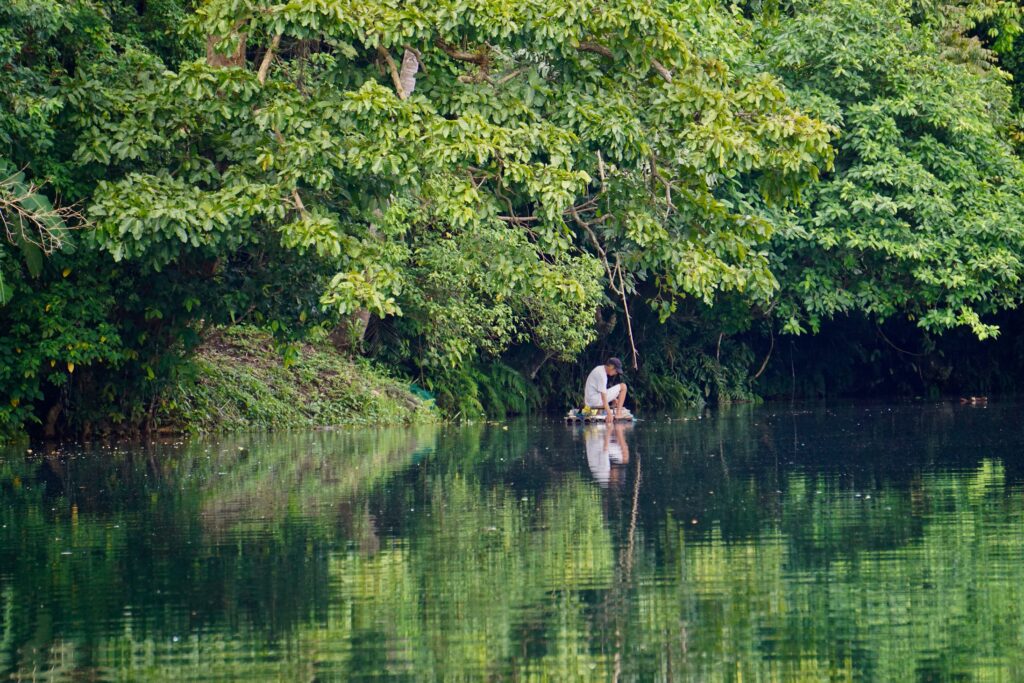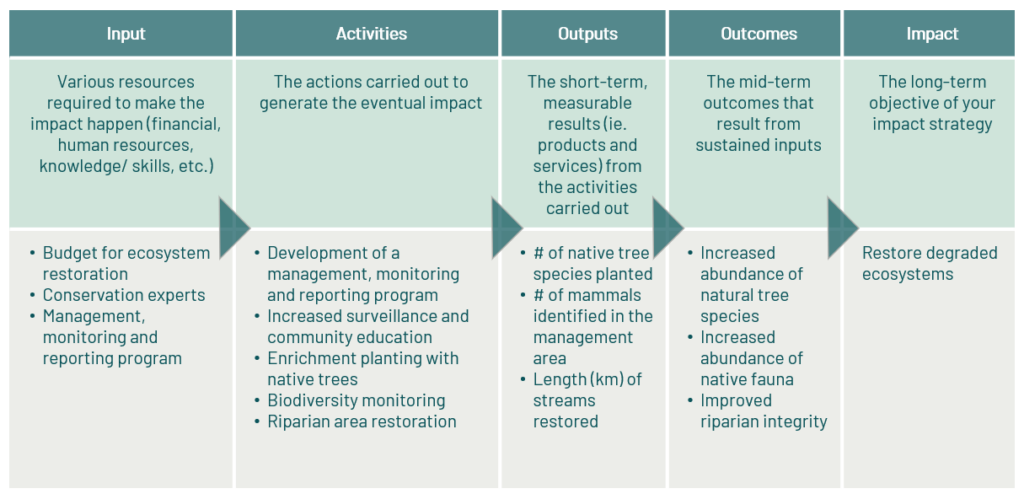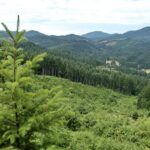Not just a tool for development agencies any longer – developing a Theory of Change for your forest impact investment in the tropics is critical. It builds credibility, increases market access (both for investors and consumers looking for demonstrated impact), is an excellent management tool, and enhances cross-organizational communication.
After reading this article, the third in a series of five on Building a winning forest impact investment strategy, you will learn:
- What a Theory of Change is, and how to build one
- Practicality, through examples from investment and business
- How to align your Theory of Change with the UN SDGs
Click here to access your free Theory of Change guidebook that I have created, enabling you to build your Theory of Change, customized to your own impact thesis.

What is a Theory of Change?
Traditionally a planning tool for non-profits and development agencies, the Theory of Change (ToC) plots a course from the resources put into a project, through its activities, to measurable results and finally arriving at the overarching impacts it aims to achieve – where one stage is linked to the next. In the business world, the ToC could be likened to a business model, where funding is linked to activities to deliver on financial objectives. As businesses become more interested in the triple bottom line of profit, people, and planet, having a ToC framework becomes a very relevant management tool to ensure the often non-commercial environmental and social impact elements are addressed.
In the world of impact investing, the ToC is a critical component. As in any investment strategy, you would have an investment thesis, in an impact investment, the ToC provides your impact thesis – both are required.
Let’s look at the nuts and bolts of a ToC through a hypothetical forest impact strategy in the tropics.
Scenario:
Forest company X is a responsible forest management company. They have ESG policies and procedures in place, they are certified for sustainable forest management practices – where their operations are audited against environmental, social, governance and economic metrics. The company wants to go further than sustainable forest management and create measurable impact in its efforts to restore some degraded area in its management unit to the natural forest ecosystem. The diagram below pictures a short-form ToC, which is used to summarize the steps towards Forest company X meeting its impact objectives.

From a planning perspective you can see how having this in place would be useful. I would suggest working backwards as you develop a ToC, starting with the impact you wish to achieve. The impact will be long-time horizon (think 15-20 years), and in and of itself, may be difficult to quantify or measure. The outcomes are a series of mid-term (5-15 years) results, that are more qualitative in nature, and collectively contribute to achieving your impact. The outputs are short-term (<5 years) and quantifiable. In essence, if you want measurable metrics or indicators to assess your progress in meeting your impact targets, the outputs will serve as your milestones to show you are on track. In fact, in a recent GIIN report on The State of Impact Measurement and Management Practice (2020), The GIIN found that 72% of the surveyed impact investors use their ToC to determine the impact metrics they will measure against. The activities are what is carried out to achieve your target outputs, and over the long term to arrive at your desired impact. The resources are then when you need to make it all happen.
3 Applications of Theory of Change in the tropical forest context
The ToC framework applies to various practitioners in the tropical forest context.
Below are three examples outside of traditional development agencies that make use of the ToC in their impact management, ranging from certification, to investment, to forest business.
1. Certification: FSC’s Ecosystem Services Procedure
I have mentioned previously, the relevance of using FSC’s Ecosystem Procedure (FSC EP) as a management tool for your forest impact investment strategy in the tropics. The FSC EP aims to establish a credible and transparent management approach for the generation of ecosystem services inside sustainably managed forests. Forest managers wishing to claim ecosystem services impacts in line with FSC’s EP need to follow the 7-step procedure, with the third step of this process being the development of a ToC.
2. An investment fund’s perspective: &Green Fund
The &Green Fund is an investment fund that invests into inclusive agriculture in the tropics, while at the same time protecting forests. They describe their ToC right on their home page, identifying their own five pathways to achieve impact:
i.) compensate mainstream financial institutions, ii.) compensate commodity producers, iii.) encourage the intensification of agricultural production without any increase in deforestation, iv.) provide risk capital to new commodity types or production systems, and v.) reinforce public policy signals and encourage improved regulation.
3. A forest company in the tropics perspective: Suzano
Brazilian company, Suzano has a thriving pulp and paper business with its own Eucalyptus plantations. Suzano has a well-developed impact thesis, targeting several UN SDGs. In 2020 they developed a ToC for one of their top impacts, Access to Education, where they support improvement of the education sector in socially vulnerable territories where they operate. Their ToC lays out how the education program will be supported, monitored, and evaluated to achieve their long-term goal for education.
Theory of Change alignment with the UN SDGs
Responsible forest investments in the tropics naturally align with several of the UN SDGs. If we are to consider the above example of a forest company wanting to create impact around restoration of degraded ecosystems from a purely environmental perspective, this is clearly aligned with UN SDG 15: Life on land. If you wanted to expand your management focus and measure additional metrics, you could address UN SDG 13: Climate Action, from the improved carbon sequestration of your restoration activities. There would also be UN SDG 6, Clean Water and Sanitation from the riparian restoration. The list goes on, but common to most sustainably managed forest investments in the tropics is alignment with the following UN SDGs:

UN SDG 8: Decent Work and Economic Growth
- Creates jobs and economic growth in rural areas,
UN SDG 12: Responsible Production and Consumption
- Produces renewable raw materials,
- Sequesters and stores carbon, provides cost-effective, natural emission removal and substitutes high emission materials like concrete and steel,
- Improves biodiversity and prevents land degradation and deforestation.
Create your own ToC with a free template from the ForestLink
If you are interested in creating a Theory of Change for your forest impact investment strategy in the tropics, I have created a guidebook with examples and three different ways to present your Theory of Change that align with these four UN SDGs. You can customize the provided worksheets to your specific impact thesis or make use of the various impacts and metrics I have identified. This tool is useful for both the impact investor designing a forest impact investment thesis for the tropics and for the project developer, wishing to manage impact more directly. To receive the template, sign up here.





